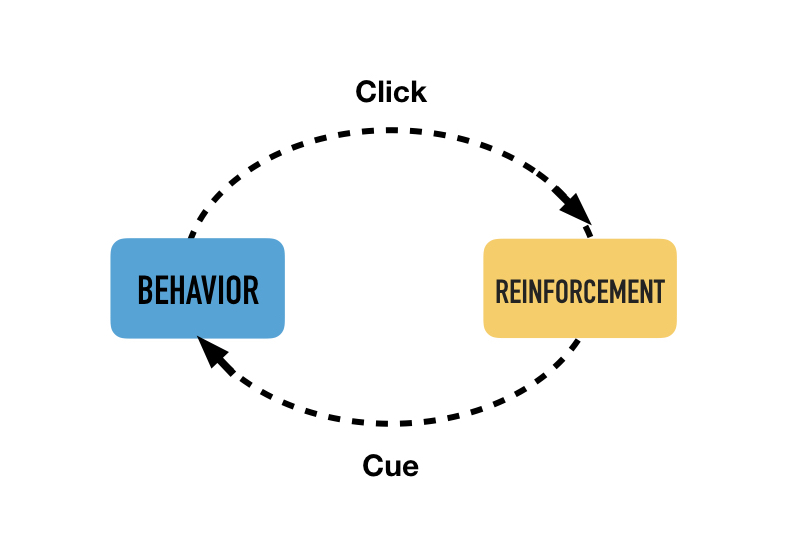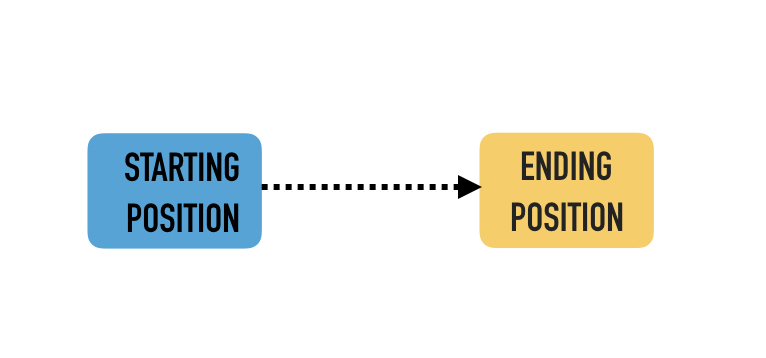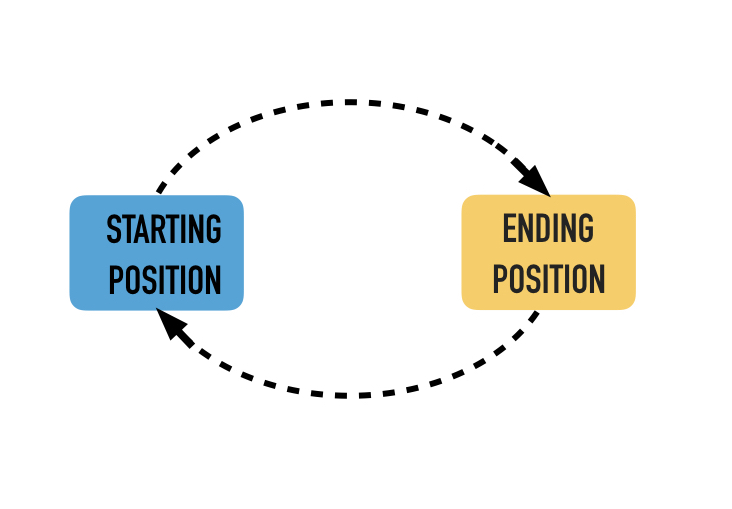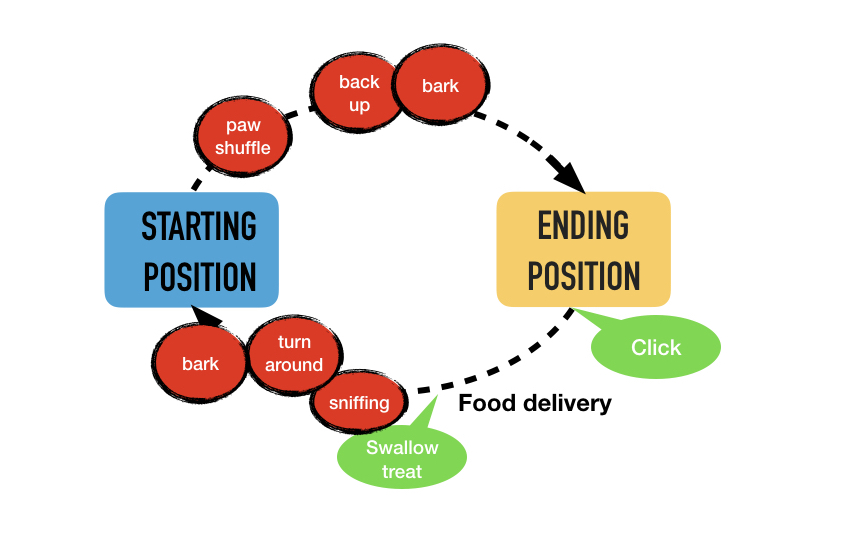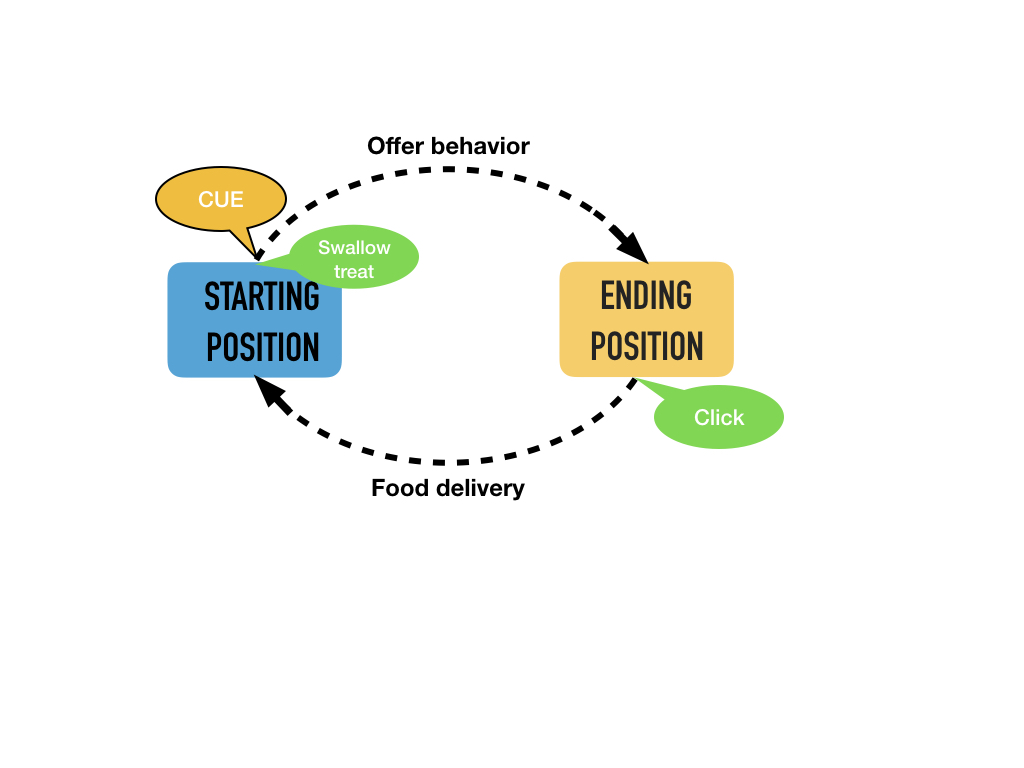1.3 TRAINING WITH CLEAN LOOPS
Training with “clean loops” is the secret to efficient training, consistent behaviors, and confident dogs. It’s the key to quick cue acquisition and painless, frustration-free stimulus control. In this class, we are going to focus a lot of our effort into building clean loops for the behaviors that we are interested in, because it’s going to make getting those behaviors on cue SO EASY it will feel like cheating.
You’ve probably already seen good trainers training with clean loops, and you probably have even experienced it yourself in some of your most productive training sessions. The principle is nothing particularly new or ground-breaking, it’s really more about how we think about training and the choices that we make to set up our training sessions. Loopy training gives us a framework to see more easily what makes good training good and help us diagnose when problems occur. Thinking about the training process this way allows us to be systematic and deliberate as we add new elements (like cues or distance) to our behaviors, which, in turn, will help prevent us from digging holes (or least from digging them too deep) that erode our dogs’ confidence.
The term, “loopy training”, comes from Alex Kurland and Dr. Jesus Rosales-Ruiz, who described the process of designing a training session so that it flows smoothly from behavior to reinforcement and back again. The important part is to recognize that training is a cycle, not a moment in time. In fact, the technical term for this is “behavior cycle”, but loopy training is more fun to say.
What is a clean loop?
A clean loop is defined by the following features:
- Dog performs all elements smoothly
- Human performs all elements smoothly
- All behaviors are performed without hesitation
- No unwanted behaviors in the loop
It’s important to note that we are accounting for the entire loop here, the whole behavior cycle, which includes both sides of the click - the behavior and the reinforcement delivery. Both sides of the loop need to be clean.
Starting position and ending position
So let’s translate this in terms of our project behaviors (our “agenda behaviors”, if you will) for this class.
We tend to think of the process of the animal moving from the starting position (like a stand) to the ending position (like a sit) as a straight line.
But it’s not actually, because the loop/cycle is not complete until the dog is back in the starting position again.
So for all of our behaviors, the cycle begins and ends in the starting position, passing through the agenda behavior on the way. We must think about both what action we want the dog to take as he moves from the starting position to the ending position, and also how we want him to move from the ending position to the starting position to be ready for the next loop.
Both sides of the loop are important. Both affect the dog’s emotional state and how he feels about the training, the behavior, and the cues involved.
But here is a cool thing…
Because half of our position changes are just opposite movements of each other, we can actually use the same loops to train both behaviors. We get two cues for the price of one!
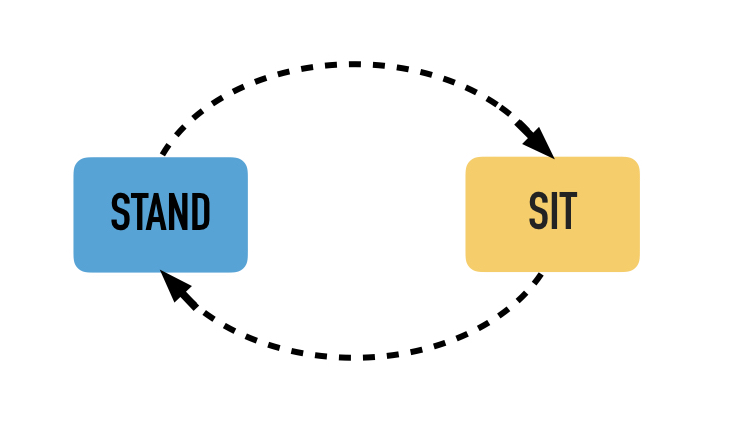
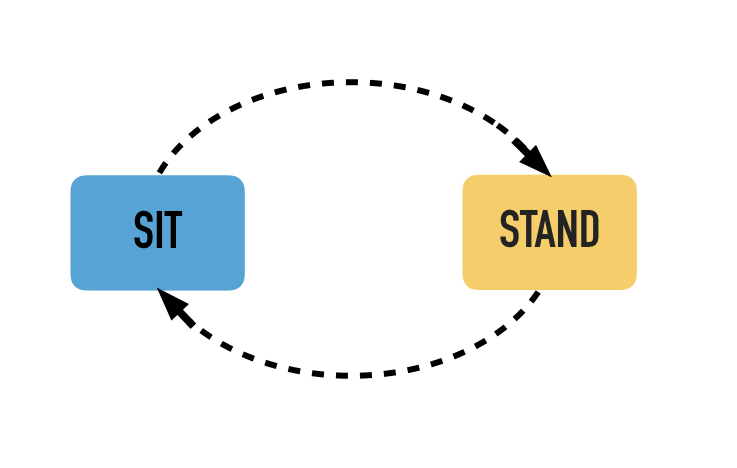
Even more importantly, starting with a clean loop means we are reducing (or even eliminating) the risk of a poisoned cue now and in the future. When we have a clean loop, the dog is happy and confident AND performing the correct behavior. So any cues we associate with the behavior will be free of associated frustration or worry (common causes of poisoned cues). This results in an overall stronger, faster, sharper behavior.
So what does a clean loop look like for our purposes?
A clean loop means that the dog is either doing the behavior or collecting the reinforcement, and he’s doing both the way you plan. AND he’s doing both with the accompanying emotional behaviors you want associated with this behavior.
While we are working with the behavior as an “offered behavior” (meaning no formal cue from the handler), the effective cue to begin the next loop will be the swallowing of the treat. So for the loop to be clean, the dog will already be back in the starting position when he swallows the treat, and as soon as the treat is down the hatch, he’s moving right back into the agenda behavior.
The click cues the initiation of the reinforcement. So as soon as the dog hears the click, he should start moving into the reinforcement collection position (or following your treat hand into that position).

There should be no gaps or leaking of other behaviors into either side of the loop. If other things happen, either between swallowing the treat and repeating the behavior or between the click and the starting position, then the loop is not, by definition, clean.
Be especially on the lookout for behaviors we usually categorize as emotional. Things like whining, barking, sniffing, or anything else that is relevant for your dog. Also, watch for delays or hesitation. For our purposes, except those exercises where we are specifically shaping a pause or wait for the cue element, the dog should pretty much always be in motion.
Once we have a clean, rhythmic loop set up, adding a cue becomes as simple as inserting it as soon as the treat is swallowed. (Don't worry, we'll dig more into this later.)
But before we can even talk about cues, we need to make sure we have those clean loops set up with just the offered behavior.
So for your first homework assignment, show me a clip of your best clean loops with *offered behaviors* (no cues), using any props that help your dog be successful, for each position change.
 Instructor: Hannah Branigan
Instructor: Hannah Branigan